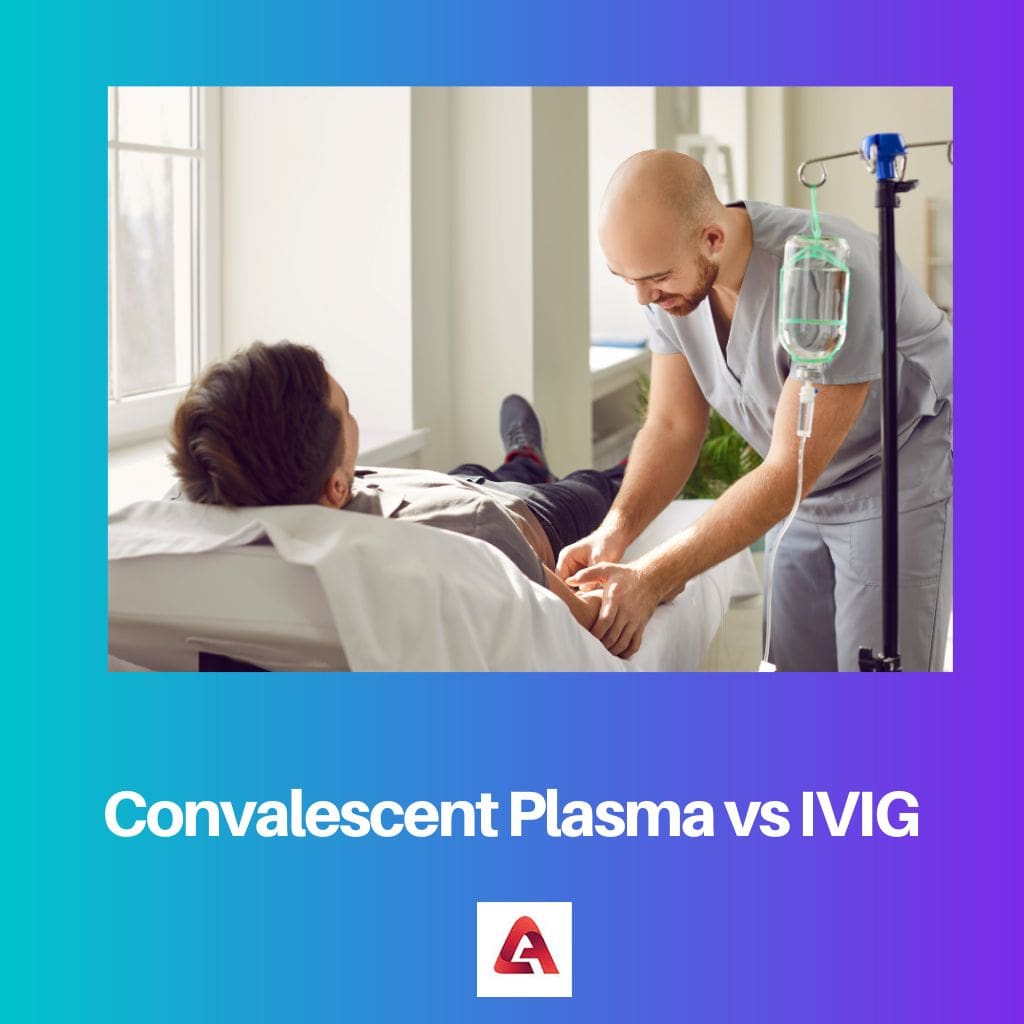Since the COVID-19 epidemic struck the world’s population, the percentage of seriously ill individuals has only risen, causing medical services to collapse internationally. In December 2020, the virus first appeared in China, and it spread quickly throughout the world.
The World Health Organization quickly proclaimed it an ongoing outbreak. Global health authorities are currently concentrating on quick diagnosis, patient isolation, and the quest for alternative medicines for people who are dangerously ill. This article compares the effectiveness and safety of Intravenous immune globulin (IVIG) and convalescent plasma.
Key Takeaways
- Convalescent plasma therapy uses blood plasma from recovered patients to treat individuals with active infections, providing passive immunity.
- IVIG (Intravenous Immunoglobulin) therapy involves administering purified antibodies from donor plasma to treat various immune deficiencies or autoimmune diseases.
- Both therapies involve the administration of antibodies, but convalescent plasma is specific to a particular infection, while IVIG treats broader immune-related conditions.

Convalescent Plasma vs IVIG
Convalescent plasma and Intravenous immune globulin are being researched as prospective treatments for coronavirus disease 2019 (COVID-19). These treatments may lower mortality in patients with viral respiratory disorders. It is necessary to have a good awareness of the advantages and disadvantages of various therapies.
Passive immunity is a benefit of convalescent plasma therapy for someone experiencing their first illness. Medical professionals may use convalescent plasma therapy during new viral outbreaks like COVID-19.
On the other hand, patients with antibody deficits can receive therapy in the form of intravenous immunoglobulin (IVIG). A collection of immunoglobulins (antibodies) from the plasma of thousands of healthy donors is used. Healthy individuals’ immune systems produce immunoglobulins to help them fight infections.
Comparison Table
| Parameters of Comparison | Convalescent Plasma | IVIG |
|---|---|---|
| Definition | An active immunotherapy treatment | A passive immunotherapy treatment |
| Timing | Short-term use | Long-term use |
| Result | Artificially inducing passive immunity | Combines immunoglobulins collected from healthy donors |
| Scale | Individualized therapy | Mass produced therapy |
| Safety | Limited viral inactivation | Extensive viral inactivation |
What is Convalescent Plasma?
Convalescent plasma, also known as immune plasma or hyperimmune plasma, is blood plasma provided by a patient who has recovered from a particular sickness with the intention of giving a patient who is now ill with that particular ailment passive immunity.
Convalescent plasma can be given to someone who has the illness for the first time to help them fight the pathogen since it has antibodies to the germ or virus that caused it. Anyone who is recovering from sickness is referred to as a “convalescent.”
Passive immunity can be artificially induced by transferring blood plasma from a patient who has recovered from a sickness, whose blood is assumed to have antibodies for that disease already. The liquid component of blood, known as plasma, may include antiviral antibodies.
No medication has been shown to be effective in treating COVID-19 since it became a significant global concern. Convalescent plasma therapy has effectively fought the infection in this case. This process is not brand-new. This has been applied and researched extensively throughout history.
What is IVIG?
Since a long time ago, primary humoral immunodeficiencies have been treated with IVIG as an alternative therapy. Although convincing evidence for IVIG therapy’s efficacy has only been proven in a small number of diseases in controlled and randomized studies, its therapeutic effect has been recorded in a significant number of autoimmune and inflammatory ailments. The serum IgG fraction, which mostly consists of IgG1 and IgG2 subtypes, is the major ingredient in IVIG preparations. Its usage in acute respiratory distress syndrome (ARDS) associated with COVID-19 is not well proven.
Your immune system naturally creates immunoglobulins to aid in the defense against infections and disease. It is a piece of the plasma in your blood. In order to lessen the effects of some inflammatory conditions that involve the immune system, a treatment known as intravenous immunoglobulin (IVIG) combines immunoglobulins obtained from various individuals.
Large plasma reserves from healthy donors are used to make IVIG. Thus, IVIG contains the full range of IgG antibodies found in healthy human plasma. Since a long time ago, primary humoral immunodeficiencies have been treated with IVIG as an alternative therapy.
Although convincing evidence for IVIG therapy’s efficacy has only been proven in a small number of diseases in controlled and randomized studies, its therapeutic effect has been recorded in a significant number of autoimmune and inflammatory ailments.
The serum IgG fraction, which mostly consists of IgG1 and IgG2 subtypes, is the major ingredient in IVIG preparations. Its usage in acute respiratory distress syndrome (ARDS) associated with COVID-19 is not well proven.
Main Differences Between Convalescent Plasma and IVIG
Convalescent Plasma
- An experimental technique known as convalescent plasma therapy (or Covid plasma therapy) involves transferring blood plasma from a patient who has recovered from a disease, whose blood is assumed to have antibodies for that disease already.
- Convalescent plasma has shown encouraging outcomes, however, it has not yet been established that it is always effective in treating COVID-19 infection.
- If used therapeutically, the use of this treatment is based on intricate logistics and necessitates a certain level of antibodies.
- In patients with moderate to severe COVID-19 infection, convalescent plasma therapy provides little to no clinical improvement and does not lower death.
- Convalescent plasma administration of antibodies has the potential to avoid illness.
IVIG
- Intravenous immunoglobulin (IVIG) therapy lessens the effects of some inflammatory conditions that have an impact on the immune system by combining immunoglobulins gathered from various individuals.
- Large plasma reserves from healthy donors are used to make IVIG.
- Clinical settings and administration safety are the main determinants of IVIG efficacy.
- Initial clinical trials on non-severe COVID-19 patients showed no appreciable benefit with IVIG therapy above usual care.
- IVIG can occasionally elevate blood pressure, which raises the risk of a heart attack or stroke.



